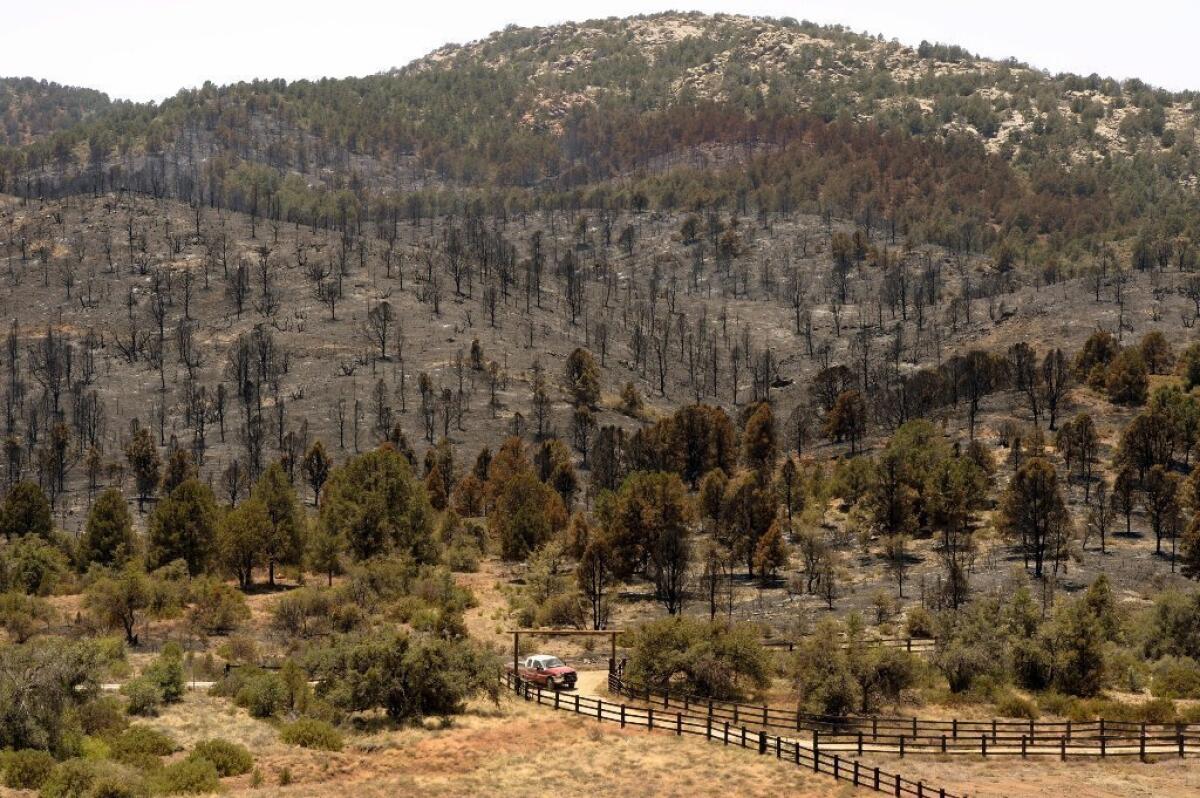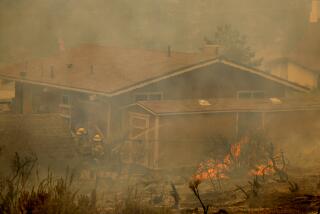Sadly, Arizona firefightersâ deaths become political fodder

As yet, there is no evidence that the ferocity of the blaze that killed 19 highly trained and dedicated firefighters in Arizona was the result of a failure to thin forests by cutting down trees to create more space between those that remain, and yet already Republican congressmen are calling for hearings on âunhealthy forestsâ and what they see as the value of thinning.
Hearings are fine. Real information, the kind thatâs based on science, downright terrific. But taking advantage of the tragedy as a political wedge to open forests to the logging industry is reprehensible.
Thinning might be a helpful tool in some situations, but under the George W. Bush administration, what was called healthy thinning often entailed slashing large swaths of trees.
Much depends on the kinds of fires and the kinds of vegetation, right down to the species of trees. Wind-driven fires skip right across thinner areas in the back country. Ponderosa pines, common in many areas of Arizona as well as Californiaâs Sierra Nevada, are naturally fire-resistant. By contrast, after loggers cut in an area, they leave behind slash -- think of it as logging trash, the branches and tree tops of the cut trees, which are usually gathered into piles. Exposed to the sun because the area now has no shade, they quickly turn dry and become fire fuel, as do the smaller plants that had previously been shaded -- and kept smaller -- by the big trees.
Wildfires are part of the natural environment in the West, including California, and they will become a more frequent presence because of climate change. Trying to stop them from happening is fruitless -- and ultimately harmful. What we can do is minimize the damage to homes and save lives, but that is a precise science that calls for tremendous expertise, not blunt-instrument calls for more thinning.
Generally speaking, the best way to reduce damage is by thinning not in the heart of forests but along the edges closest to urban and suburban areas -- the urban interface, as itâs called -- creating whatâs known as âdefensible spaceâ where firefighters can more safely and effectively carry out their heroic acts.
By all means, letâs use whatever lessons there might be from the Arizona fire to make firefightersâ jobs safer. But letâs not use their deaths as political cudgels or as gifts to the logging industry.
ALSO:
Come home, Ed Snowden, and face the music
Five reasons to stay away from Texas right now
Vatican infighting: We told you two popes could be a problem
More to Read
A cure for the common opinion
Get thought-provoking perspectives with our weekly newsletter.
You may occasionally receive promotional content from the Los Angeles Times.











